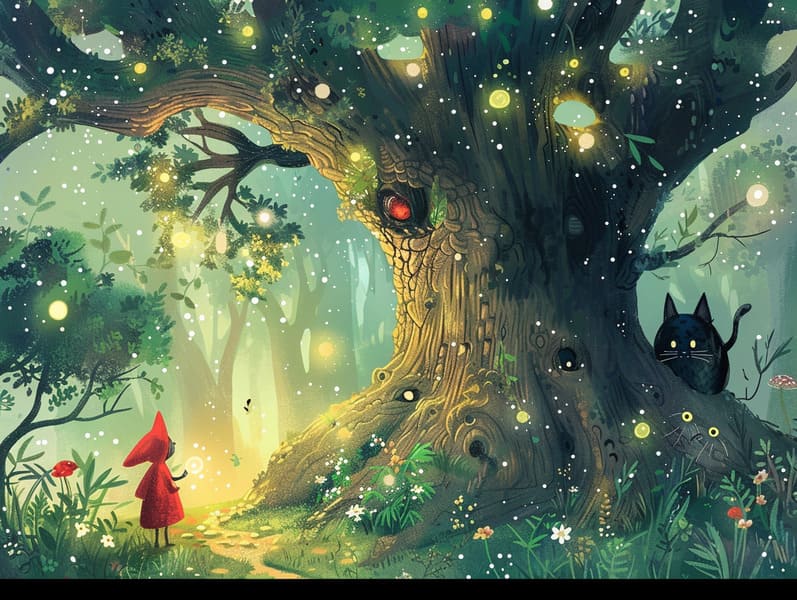
Timeless fairy tales have enduring presence. These narratives have been shared from one generation to the next millennia before they were ever documented. They arose from a variety of traditions, including Western traditions. They were initially conveyed among older generations, often carrying themes and messages reflective of the societal norms and beliefs of the time.
The famous Grimm duo, Jacob and Wilhelm, were among the first to assemble many of these beloved fairy tales. Their compilation, "Grimm's Story Collection," included stories like "The Story of Cinderella," "Hansel and Gretel," and "Snow-White and Rose-Red," which have since become classics in the world of timeless fairy tales. Similarly, the Danish author's charming tales, such as "The Story of the Little Mermaid," and "The Little Duckling," have stolen hearts worldwide, cementing their place in the pantheon of timeless fairy tales.
Despite their ancient origins, classic fairy tales remain as relevant as ever, especially as children's bedtime stories. These enchanting tales are now available in diverse formats, including artistically illustrated books, delightful animations, and online storybooks.
Their lasting appeal can be credited to several whimsical characteristics:
Moral Lessons: Classic fairy tales often teach important moral lessons. Narratives like "The Tale of the Boy Who Cried Wolf" teach the importance of being truthful, while "The Hare and the Tortoise" stress the qualities of resolve and unpretentiousness. These narratives offer kids clear distinctions between moral and immoral, shaping their moral compass in a kind yet impactful way.
Sympathy and Perception: Classic fairy tales frequently portray heroines facing trials and tribulations, inspiring young readers to resonate with their struggles and encourage their triumphs. For instance, "The Story of Beauty and the Beast" conveys the merit of seeing inner beauty to realize the true nature of a being, enhancing perception and knowledge.
Cultural Comprehension: Many traditional fairy tales are rooted in the cultural contexts from which they arose. Reading these narratives can provide fascinating glimpses into different backgrounds, cultivating a sense of world insight and respect.
Inventiveness and Imagination: The enchanted elements in fairy tales—magical beings—spark children’s imaginative ideas. These tales transport readers to fantastical realms, kindling creative thinking and a sense of astonishment that remains a lifetime.
Timeless fairy tales are not only enchanting but also pedagogical. They serve as captivating tools in developing various thinking and feeling skills in kids. When traditional fairy tales are spoken out loud, they develop communication skills by introducing new terms and sophisticated sentence structures. This practice also cultivates auditory skills and mental focus, as children stay focused, anxious to see what happens next.
Furthermore, conversing about the themes and characters of old fairy tales can sharpen problem-solving abilities and reasoning skills. The young are guided to detect patterns, forecast, and get cause and effect. These conversations also advance the young say their thoughts and feelings, promoting their emotional intelligence.
In today’s digital era, the existence of digital fairy tales has made these fairy tales more within reach than ever. Digital sites and mobile apps present broad selections of ancient fairy tales that can be perused or listened on anytime, anywhere. Fairy tales read aloud are particularly liked, offering an immersive method for little ones to immerse in these mesmerizing stories. Sound books and read-out-loud stories carry characters and settings to life, often supported by captivating sound effects and music that enrich the storytelling journey.
The timeless allure of traditional fairy tales lies in their ability to transform to present days while keeping their essential themes. Contemporary updates of these stories often incorporate more inclusive characters and modern settings, making them meaningful to today’s audience. However, the central morals of courage, warmth, and truth remain unchanged, continuing to strike a chord with kids of all ages.
Traditional fairy tales also offer a sense of assurance and knownness. They highlight a ordered narrative with a apparent beginning, middle, and end, often winding up with the conclusion of conflicts and the triumph of virtue over wickedness. This dependability can be heartening for kids, proffering a sense of steadfastness in an inconstant world.
Classic fairy tales continue to bewitch and guide new generations, maintaining their elegance and importance in modern society. As children's bedtime stories, they yield a perfect blend of fascination and comprehension, nurturing moral values, empathy, and creativity. The proliferation of free fairy tales online and the in demand status of fairy tales voiced warrant that these ancient tales remain attainable to new generations.
By conserving and conveying these tales, we continue to recognize the rich tapestry of tales and cultural heritage. Whether you are reading a artistically illustrated book, perusing a web collection, or listening via an audio story, the charm of bedtime fairy tales is always within reach. These stories teach us of the steadfast presence of storytelling and its ability to bond us across time and space.
Be it you are exploring a artistically illustrated book, discovering a online library, or listening through an narrated book, the charm of traditional fairy tales is always within reach.
These stories teach us of the invariable power of storytelling and its ability to bind us across eras these guys and regions, weaving a spell that charms and informs alike.
Comments on “The Inception of Grimm's Fairy Tales and the Eternal Wonder.”